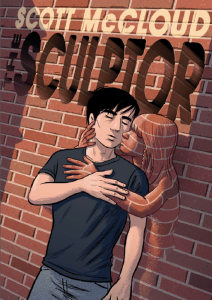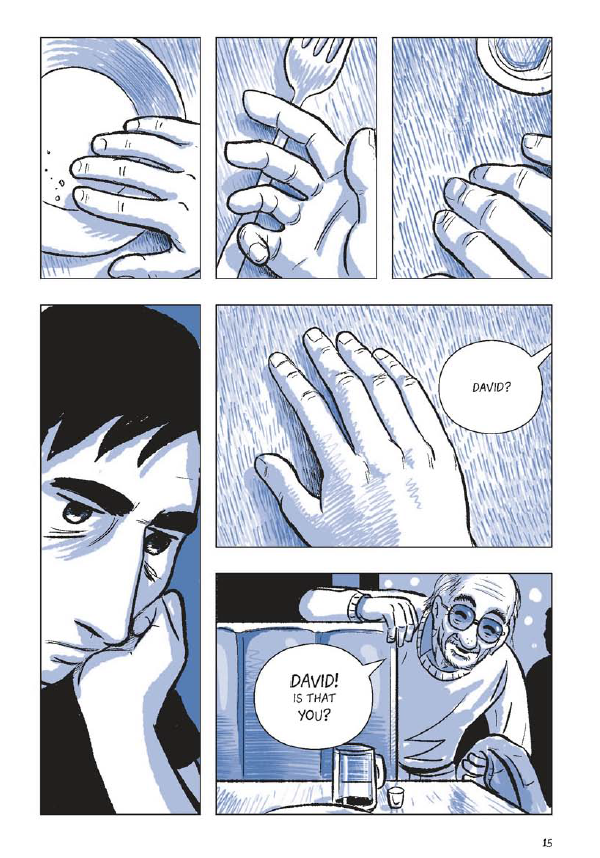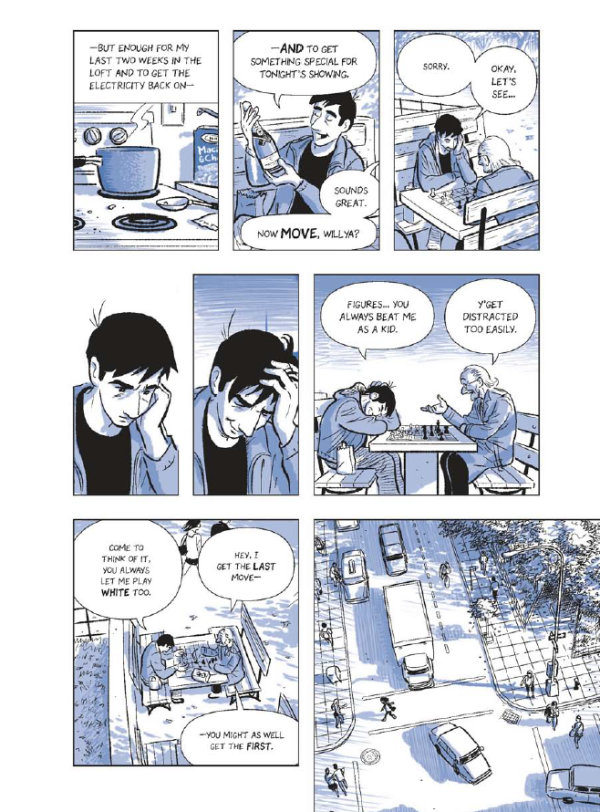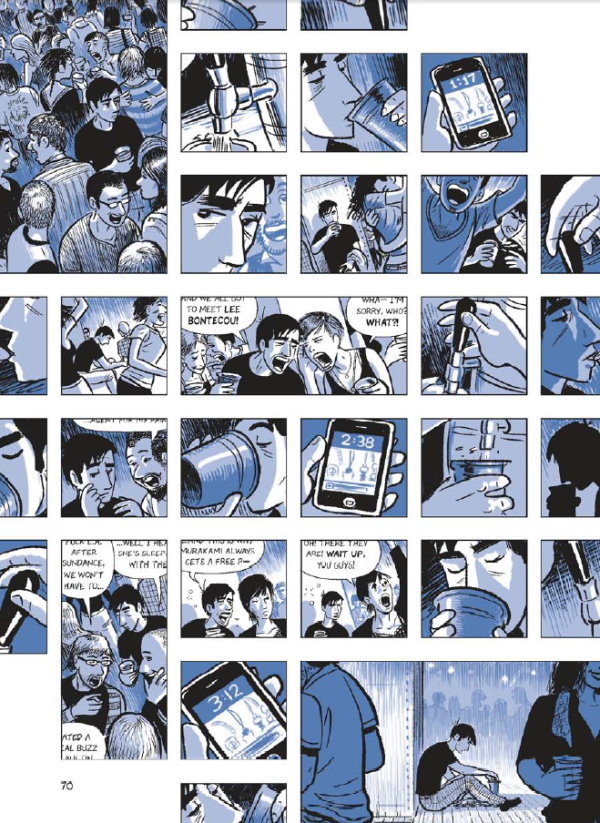What We’re Reading: The Sculptor

 The Sculptor by Scott McCloud (First Second, Feb 3, 2015)
The Sculptor by Scott McCloud (First Second, Feb 3, 2015)
The Sculptor, Scott McCloud’s just released graphic novel, is a dense and impressive work. Using a set of familiar tropes (a deal with the devil, an artist and his muse, superpowers with consequences), McCloud tells a deep and affecting story while avoiding the pitfalls of said tropes. He uses a full complement of storytelling methods to control the rhythm and pacing across hundreds of pages without seeming flashy or clinically formalist.
I honestly wanted to dislike The Sculptor. I had just finished a new release by one of McCloud’s contemporaries (age-wise, at least, and probably fame-wise) that left a sour taste in my mouth. I was ready to read this book and write off an entire generation of cartoonists.
The introductions of McCloud’s many moving parts had me primed for dismissal: a deal with a too-cutesy Death, a troubled male artist and his beautiful but out-of-bounds muse, and big questions about the importance of art. I was ready to see the deal backfire due to the artist’s pride, to see the muse (a manic pixie dream girl) be harmed in the process, and then see the artist learn that art is universal or something like that.
I was so happy to have my expectations subverted. With almost 500 pages at his disposal, McCloud refuses to rush through his plot. The characters gain development and dimensionality. They rub up against their faults and the faults of others, circle each other, come apart, and return. And yes, maybe the guy gets the girl, but the girl has a full range of emotions, their relationship has ups and downs, and their love is a project they work on together.
And art’s not universal. Art is a mix of human desires, market forces, and human whims, and it doesn’t have any answers.
Protagonist David begins the book seeking success as an artist. He’s at an all-time low, drunk and penniless. He’s given 200 days of magic powers to meet his goal, and then he dies.
These powers come from his hands, and McCloud doesn’t let us forget this:
Hands are what we use to grab the world, mold it, push it. The implication is that David has power, responsibility, and agency. He’s primed to be the hero who takes control of his life in his final days and seize victory from Death!
But that’s not what The Sculptor is about. Instead, it’s about David learning what he can’t control. His hands, able to sculpt any inanimate material with a touch, aren’t worth a thing when his muse, Meg, is struggling with a mood disorder. His hands can’t make people like his art. They can’t stave off death or bring back his family.
The length of the book is key to McCloud’s organic development of the characters, and he utilizes every inch of space in a thoughtful way. Regular grids with wide margins take the reader through conversations at a comfortable pace, but McCloud also stretches panels to the gutters to lead into scene changes…
…or creates frenetically repetitive layouts for stressful party scenes.
The texture and coloring lends a quiet three-dimensionality to the drawings that’s appropriate for a story about sculpting, and it reveals a skillset that hasn’t found a place in other McCloud works.
With the comfortable display of cartooning skill on display and the touching character work, I’m worried that there’s some hidden flaw in The Sculptor that McCloud has puttied over and rounded off—some crumbling foundation that I missed while I was too busy being wowed. If that’s the worst thing I can say about the book, though, I’ll count it as a success. Besides, it gives me a reason to walk through its pages again.
Psst: Hear McCloud read from The Sculptor at Macalester on February 15! Details here.









Comments are closed.